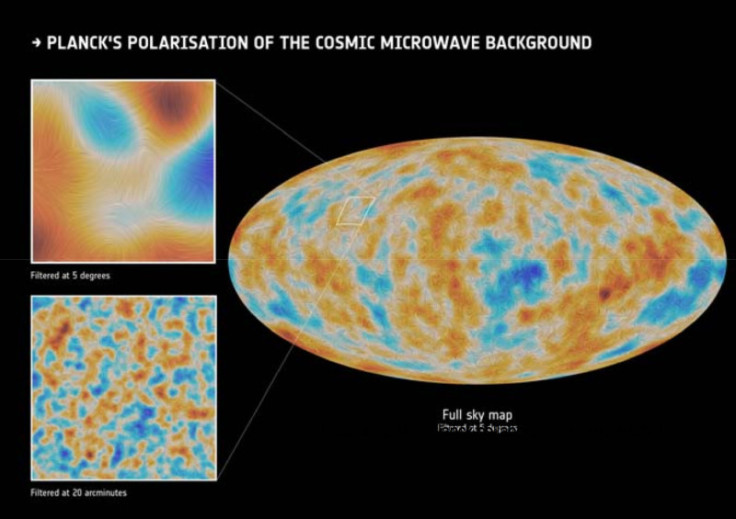Universe is 13.77 billion years old and it contains only 4.9% ordinary matter, says Planck data

The high precision Planck data just released has placed the age of the universe at 13.77 billion years, besides showing that the first stars were born 550 million years after the Big Bang.
Data from four years of observation by ESA's spacecraft shows 4.9% of the Universe to be made of ordinary matter, 25.9% dark matter and 69.2% dark, unknown energy.
The researchers calculate the current rate at which space is expanding to give the age of the universe.
The Planck collaboration, which includes the CNRS, the French Alternative Energies and Atomic Energy Commission (CEA), the French National Space Agency (CNES) and several French universities and institutions, aimed to study the Cosmic Microwave Background (CMB), the light left over from the Big Bang.
The Planck measurements, taken in nine frequency bands, were used to map not only the temperature of radiation but also its polarisation providing information about both the very early Universe (when it was 380,000 years old) and our Galaxy's magnetic field.
Besides the full-sky map of CMB, it includes a map of the polarised emission from interstellar dust, a catalog of 13,188 cold, dense clouds in our Galaxy and of 1,653 galaxy clusters detected via their interaction with the CMB.
It also has information about the way in which matter has gradually clustered together over the last 10 billion years.
The colours show the deviations of the temperature of the Cosmic Microwave Background from its mean value. The colder blue regions and the warmer red regions provide evidence of variations in the density of matter early in the history of the Universe.
However, it is the data relating to the polarisation of the CMB that has allowed cosmologists to test a number of hypotheses about the Universe, on physical laws and constituents.
Interstellar dust emits radiation at the wavelengths observed by the Planck spacecraft. Since space is pervaded by a magnetic field, this field tends to align the grains in dust, which polarises their radiation. For the first time, Planck measured this polarisation over the whole sky.
The discovery of our Galaxy's magnetism is linked to that of the high-energy particles known as cosmic rays. Without such a magnetic field, these particles, accelerated by supernovae to speeds close to that of light, would rapidly escape from the Galaxy.
The magnetic force of our galaxy that helps retain cosmic ray particles is controlled by interstellar matter.
How gravity overcomes the magnetic field to trigger the formation of stars could now be understood using the two new maps of the polarisation of the sky -- one, the synchrotron emission of the electrons in cosmic radiation, and the other the emission from interstellar dust.
The data reveals the structure of the Galactic magnetic field in unprecedented detail and indicates the direction of the magnetic field.
Interpreting the observations will require comparison with models and numerical simulations in order to understand the interaction between matter and the magnetic field.
The data and the accompanying articles have been submitted to the journal Astronomy & Astrophysics.
© Copyright IBTimes 2025. All rights reserved.





















